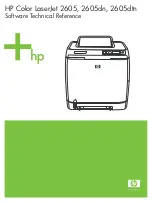
Authenticating Users Using RADIUS or
ExtremeWare 7.2e Installation and User Guide
175
10.203.1.42
eric
type=nas
10.0.52.14
samf
type=nas
users
user
Password = ""
Filter-Id = "unlim"
admin
Password = "", Service-Type = Administrative
Filter-Id = "unlim"
eric Password = "", Service-Type = Administrative
Filter-Id = "unlim"
albert
Password = "password", Service-Type = Administrative
Filter-Id = "unlim"
samuel Password = "password", Service-Type = Administrative
Filter-Id = "unlim"
RADIUS Per-Command Configuration Example
Building on this example configuration, you can use RADIUS to perform per-command authentication
to differentiate user capabilities. To do so, use the Extreme-modified RADIUS Merit software that is
available from the Extreme Networks by contacting Extreme Networks technical support. The software
is available in compiled format for Solaris
™
or Linux
™
operating systems, as well as in source code
format. For all clients that use RADIUS per-command authentication, you must add the following type
to the client file:
type:extreme:nas + R ACCT_RFC
Within the
users
configuration file, additional keywords are available for
Profile-Name
and
Extreme-CLI-Authorization
. To use per-command authentication, enable the CLI authorization
function and indicate a profile name for that user. If authorization is enabled without specifying a valid
profile, the user is unable to perform any commands.
Next, define the desired profiles in an ASCII configuration file called
profiles
. This file contains
named profiles of exact or partial strings of CLI commands. A named profile is linked with a user
through the
users
file. A profile with the
permit on
keywords allows use of only the listed commands.
A profile with the
deny
keyword allows use of all commands except the listed commands.
CLI commands can be defined easily in a hierarchal manner by using an asterisk (*) to indicate any
possible subsequent entry. The parser performs exact string matches on other text to validate
commands. Commands are separated by a comma (,) or newline.
Looking at the following example content in profiles for the profile named
PROFILE1
, which uses the
deny
keyword, the following attributes are associated with the user of this profile:
•
Cannot use any command starting with
enable
.
•
Cannot issue the
disable ipforwarding
command.
•
Cannot issue a
show switch
command.
•
Can perform all other commands.
We know from the
users
file that this applies to the users
albert
and
lulu
. We also know that
eric
is
able to log in, but is unable to perform any commands, because he has no valid profile assigned.
Summary of Contents for ExtremeWare 7.2e
Page 14: ...14 ExtremeWare 7 2 0 Software User Guide Contents...
Page 18: ...18 ExtremeWare 7 2e Installation and User Guide Preface...
Page 80: ...80 ExtremeWare 7 2e Installation and User Guide Accessing the Switch...
Page 102: ...102 ExtremeWare 7 2e Installation and User Guide Virtual LANs VLANs...
Page 108: ...108 ExtremeWare 7 2e Installation and User Guide Forwarding Database FDB...
Page 180: ...180 ExtremeWare 7 2e Installation and User Guide Security...
Page 194: ...194 ExtremeWare 7 2e Installation and User Guide Ethernet Automatic Protection Switching...
Page 218: ...218 ExtremeWare 7 2e Installation and User Guide Spanning Tree Protocol STP...
Page 248: ...248 ExtremeWare 7 2e Installation and User Guide Interior Gateway Protocols...
Page 256: ...256 ExtremeWare 7 2e Installation and User Guide IP Multicast Routing...
Page 308: ...308 ExtremeWare 7 2e Installation and User Guide Using ExtremeWare Vista on the Summit 400...
Page 316: ...316 ExtremeWare 7 2e Installation and User Guide Technical Specifications...
Page 324: ...324 ExtremeWare 7 2e Installation and User Guide Software Upgrade and Boot Options...
















































